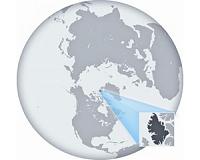 |
New Rochelle NY (SPX) Jun 11, 2010 The ongoing search for evidence of past or present life on Mars includes efforts to identify organic compounds such as proteins in Martian soil, but their absence to date remains a mystery. A new theory to explain what happens to these carbon-based molecules is presented in an article published in Astrobiology "There may be no 'safe haven' for these organic molecules on Mars," conclude Ilya Shkrob, Sergey Chemerisov, and Timothy Marin, from Argonne National Laboratory and Benedictine University, in Illinois, in their article entitled "Photocatalytic Decomposition of Carboxylated Molecules on Light-Exposed Martian Regolith and its Relation to Methane Production on Mars." Unlike on Earth, where plants and other organisms convert carbon dioxide and water into organic compounds via photosynthesis, the authors propose that the opposite happens on the surface of Mars. The iron oxides that make up Martian soil and give the planet its distinctive red color are photocatalysts. They use energy from ultraviolet light absorbed through the thin Martian atmosphere to oxidize carbon-containing organic molecules trapped in soil particles, converting them to carbon dioxide and gases such as methane. The authors present study data to support this model and to explain why it might not be realistic to rely on the discovery of proteins, amino acids, and other carbon-containing compounds in the upper soil layers of Mars to determine whether life forms are or have been present on the planet. "This is an interesting result and may be an important step in solving the enduring mystery of organics on Mars," says Christopher P. McKay, Senior Editor of Astrobiology and Research Scientist at NASA Ames Research Center. "We see organics in many places in the solar system but have not been able to detect them on Mars - the planet that we think had the most Earth-like conditions. Why? Could it be our instrument approach has been wrong? Or could it be that there is some chemistry on Mars that is actively destroying organics? This work points toward this latter explanation. Mars may have a self cleaning surface. If so, we may have to dig deeply to find any organic materials." "The importance of drilling below the Martian surface for rocks and soils that might retain preserved organics is certainly on the minds of future mission scientists," says Sherry L. Cady, PhD, Editor of Astrobiology and Associate Professor in the Department of Geology at Portland State University. "The possible 2018 joint ESA-NASA mission is a case in point." The article is available free online.
Share This Article With Planet Earth
Related Links Benedictine University Mars News and Information at MarsDaily.com Lunar Dreams and more
 Experts Say Life Could Survive On Mars
Experts Say Life Could Survive On MarsMontreal, Canada (SPX) Jun 07, 2010 Researchers at McGill's department of natural resources, the National Research Council of Canada, the University of Toronto and the SETI Institute have discovered that methane-eating bacteria survive in a highly unique spring located on Axel Heiberg Island in Canada's extreme North. Dr. Lyle Whyte, McGill University microbiologist explains that the Lost Hammer spring supports microbial lif ... read more |
|
| The content herein, unless otherwise known to be public domain, are Copyright 1995-2010 - SpaceDaily. AFP and UPI Wire Stories are copyright Agence France-Presse and United Press International. ESA Portal Reports are copyright European Space Agency. All NASA sourced material is public domain. Additional copyrights may apply in whole or part to other bona fide parties. Advertising does not imply endorsement,agreement or approval of any opinions, statements or information provided by SpaceDaily on any Web page published or hosted by SpaceDaily. Privacy Statement |